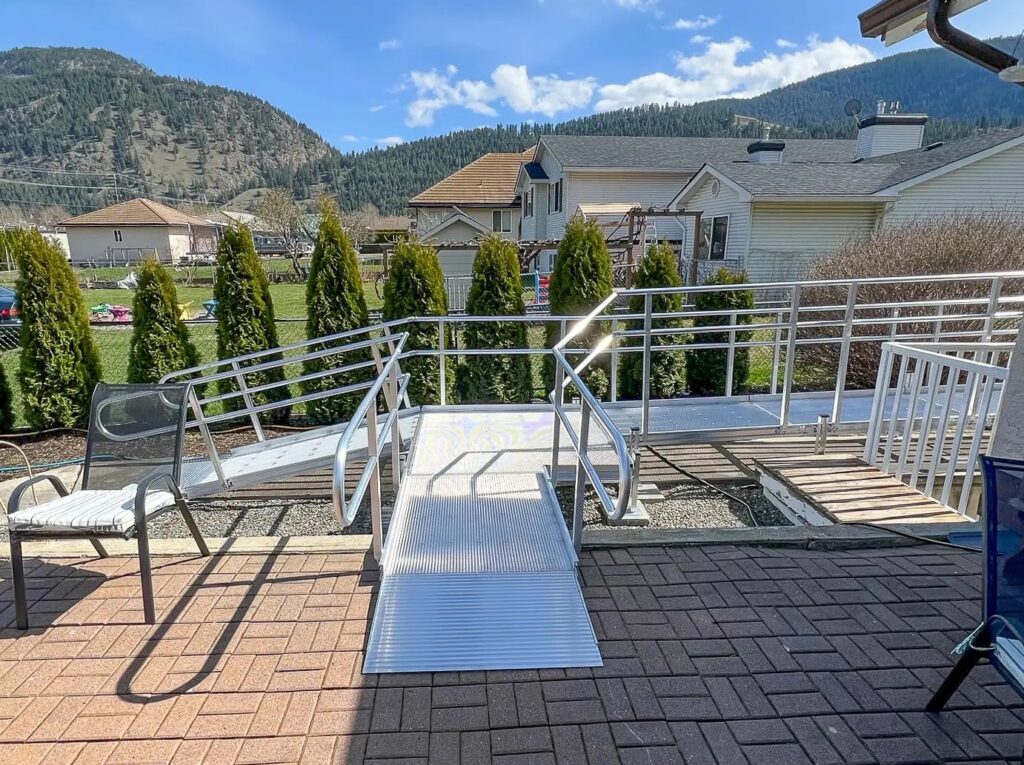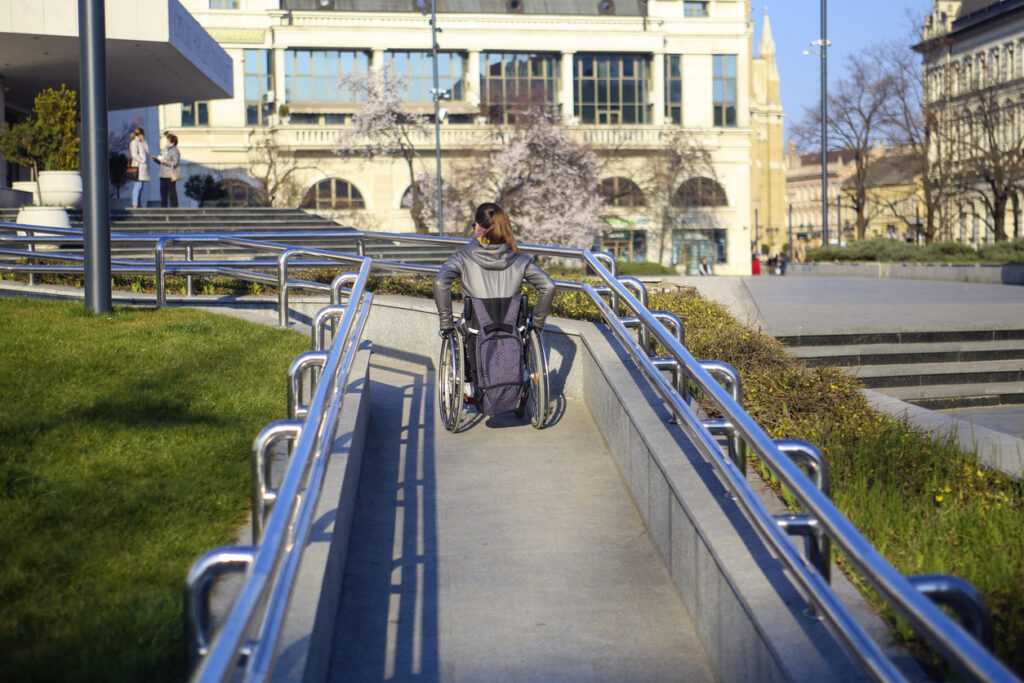
Articles
Cost-Effective Accessibility Solutions for Businesses: Why Ramps Matter
If you’ve ever seen someone struggle to get into a shop, restaurant, or office building because there’s no ramp—then you already know why accessibility matters. It’s real, it’s frustrating, and it sends a message that those individuals weren’t a priority. In British Columbia and across Canada, more and more businesses are realizing that accessibility affects […]
If you’ve ever seen someone struggle to get into a shop, restaurant, or office building because there’s no ramp—then you already know why accessibility matters. It’s real, it’s frustrating, and it sends a message that those individuals weren’t a priority.
In British Columbia and across Canada, more and more businesses are realizing that accessibility affects everything from customer trust to foot traffic to reputation. And the thing is, the fix isn’t complicated or wildly expensive. It’s usually a matter of planning, picking the right equipment, and working with people who know what they’re doing.
There’s another side to this: meeting accessibility standards, avoiding fines, staying ahead of code changes—it’s all easier when you start with a good plan.
At HME, we’ve helped businesses in all kinds of buildings install ramps and increase accessibility. We’ve seen what works and what trips people up, so let’s dive in and talk about ramps.
Meeting Legal Requirements Without Making It a Headache

There’s no shortage of regulations when it comes to accessibility. The BC Building Code has clear rules about slope, width, landings—you name it. For instance, ramps must have a maximum slope of 1:12 (8.33%) for most occupancies, and landings are required at the top and bottom of each ramp run . These regulations are in place to ensure safety and accessibility for all users.
But here’s what trips up a lot of businesses: the assumption that accessibility upgrades have to be expensive, invasive, or involve massive construction projects. That’s not always true. Solutions like modular ramps can be installed with minimal disruption, offering a practical way to enhance accessibility without major construction.
The other piece most folks overlook? Reputation. People notice when a business makes an effort to be accessible. They also notice when it doesn’t. And in a world where reviews and word of mouth make a big difference, that matters.
Proactively addressing accessibility not only helps you stay ahead of potential compliance issues but also demonstrates a commitment to serving all members of the community. It’s a strategic move that benefits both your customers and your business.
Picking the Right Ramp for Your Space
Not every building needs a permanent concrete structure out front. There’s a wide range of ramps for wheel chairs that can match your setup, your budget, and even your aesthetic.
Here’s a quick breakdown of what’s out there:
Modular Ramps
These are like the Lego of accessibility. They come in pieces, go together fast, and can be adjusted or relocated if your needs change. A lot of businesses choose modular ramps because they work with existing structures and don’t require demolition or digging.
At HME, we’ve installed modular ramps for storefronts, clinics, and office buildings where permanent changes weren’t practical—or weren’t allowed due to lease restrictions.
Portable Ramps
If you run events, manage a space with multiple access points, or have a more temporary setup, a portable ramp might be all you need. They’re lightweight, easy to store, and can be deployed on the fly.
That said, portable ramps aren’t for every situation. You still need to meet slope and safety requirements, and they’re better suited to lower rises and short-term use.
Custom Permanent Ramps
Sometimes, a permanent solution is the best route—especially for buildings that are seeing a full accessibility overhaul. These can be designed to match the layout and materials of your building and offer a seamless long-term fix.
We’ve worked with clients who wanted ramps that not only met code but also matched their branding or design style. It’s absolutely possible to make something that looks good and works well.
Ramps for Wheel Chairs Help More People Than You Think

Accessibility ramps are designed for people using mobility devices—but let’s be honest, almost everyone ends up using them. If you’ve ever wheeled a dolly, pushed a stroller, hauled a suitcase, or just wanted to avoid stairs after leg day, a ramp made your life easier.
This is where universal design really shines. A ramp for wheel chairs doesn’t just serve one group—it quietly makes things smoother and safer for everyone who walks (or rolls) through your door.
And safety isn’t a throwaway detail. In Canada, especially in wet or icy weather, outdoor stairs can turn into a slip-and-fall hazard. A well-designed ramp, with proper surface grip and drainage, can reduce that risk in a big way. It’s just a smart addition to any commercial space.
When we install ramps, we look at the details:
- Is the surface textured for traction?
- Are the edges protected to prevent roll-off?
- Do transitions from ramp to ground feel seamless?
- Is it wide enough to accommodate scooters, walkers, or two people side by side?
These things matter—not just for compliance, but for real-world use. Good ramps get used. Bad ramps get avoided.
Final Thought: A Small Change That Opens Doors

Installing a ramp for wheel chairs isn’t about checking a box or avoiding a fine—it’s about creating a space where more people feel welcome. And in most cases, it’s one of the simplest, most cost-effective upgrades you can make to improve accessibility.
When it’s done right, a ramp does more than meet building code. It signals that your business cares about everyone who walks—or rolls—through your doors.
If you’re thinking about making your space more accessible, HME can help you figure out what works best for your building. From modular installs to fully custom solutions, we’ve done this in every kind of space you can think of.
Start by talking to someone who’s done it before. Reach out to HME’s team to get a quote or ask what’s worked for others in your industry.
Related Posts

Vertical Platform Lifts for Homes: Safe and Stylish Mobility Solutions
July 15, 2025
A lot of homeowners start to notice small signs before a full-blown mobility issue ever happens....

Essential Tips for Selecting the Right Stair Lift for You and Your Home
April 16, 2025
Navigating your own home shouldn’t be a struggle; however, we understand that as you get older, s...

Aging in Place: How to Stay in the Home You Love for the Long Haul
March 7, 2025
Most people want to stay in their own homes as they age, but that isn’t always simple. Stairs bec...